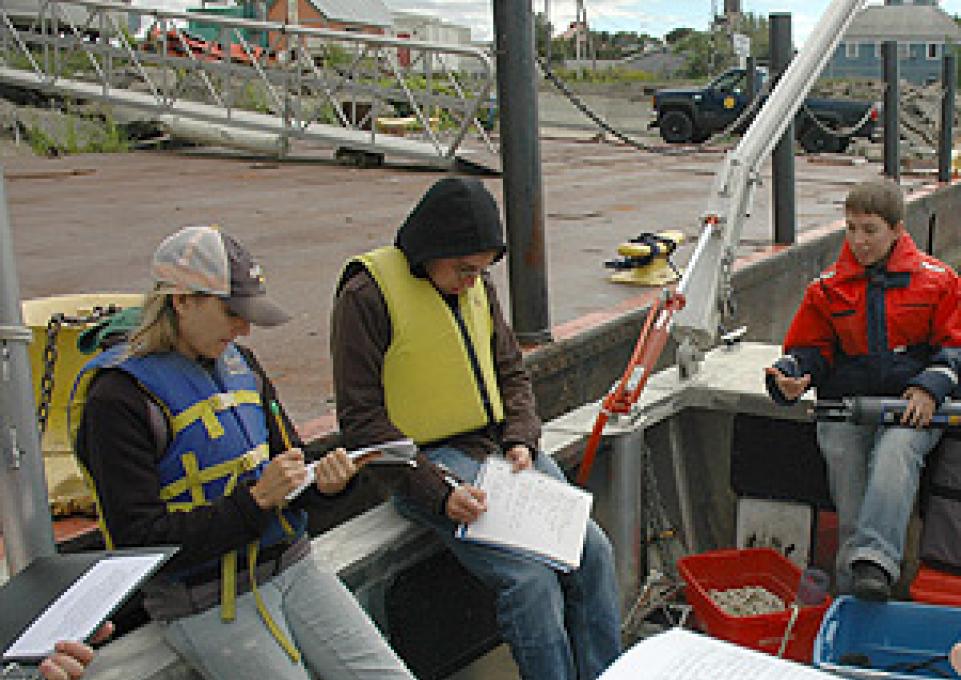
The warmer the summer, the more dead birds and fish you can expect to see along the shores of Lake Erie, according to a recent study led by Alicia Pérez-Fuentetaja, research scientist at the Great Lakes Center and associate professor of biology. The study appears online in the Journal of Great Lakes Research.
The deaths result from outbreaks of type E botulism, caused by a common bacterium, Clostridium botulinum. The researchers compared conditions in the eastern basin of Lake Erie during the summer of 2002, a warm summer when the number of fish and bird mortalities were high, to the summer of 2003, when the number of fish and bird mortalities were barely noticeable in beach-monitoring efforts. In 2002, beach transect surveys by the New York State Department of Environmental Conservation yielded a count of 17,301 dead birds, mostly long tail ducks; in 2003, only 3,008 birds, mostly common loons, were found.
The study notes that, while type E botulism outbreaks are not a new occurrence in Lake Erie, they were infrequent until 1998. Since then, according to an earlier study published by Pérez-Fuentetaja et al, the outbreaks have become a regular seasonal event in Lake Erie.
“Birds like common loons and long-tail ducks, and fish like smallmouth bass and freshwater drum, die in the thousands each summer,” said Pérez-Fuentetaja. “As the lake gets warmer and there is less ice cover in the winter, warm conditions in sediments will be more common, and we should expect botulism type E outbreaks to become more widespread.”
The warmer temperatures set off an environmental chain reaction—lower oxygen levels, higher conductivity, lower redox, and lower pH—that creates conditions under which the bacteria that cause type E botulism flourish. “Because of climate change,” said Pérez-Fuentetaja, “the expectation is that, on average, summer temperatures will continue to be higher than they were 100 years ago.”
Pérez-Fuentetaja, an aquatic ecologist interested in food web interactions, explained that these bacteria or their toxin can be passed from one organism to another in their food, causing botulism. The team found the bacteria (in the form of spores) in invertebrates that live in the muddy bottom of the lake, including the juvenile forms of mayflies; a type of midge called chironomid; and in earthworm-like creatures. They have also found these bacteria in quagga and zebra mussels and in accumulations of their feces. All these organisms are food to fish and ducks, and fish are also food to other fish and fishing birds, passing the deadly bacteria or their toxin from one diner to the next.
To date, no human cases of botulism caused by consuming fish from Lake Erie have been reported.
The study’s coauthors are Mark D. Clapsadl, fisheries biologist and manager of the Great Lakes Center Field Station; Rodman G. Getchell and Paul C. Bowser of the aquatic health program at the College of Veterinary Medicine at Cornell University; and W. Theodore Lee, associate professor and chair of the Biology Department at SUNY Fredonia.
